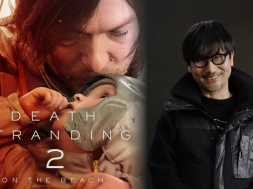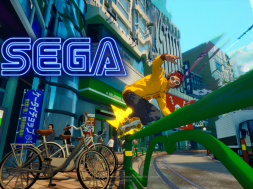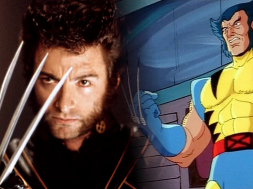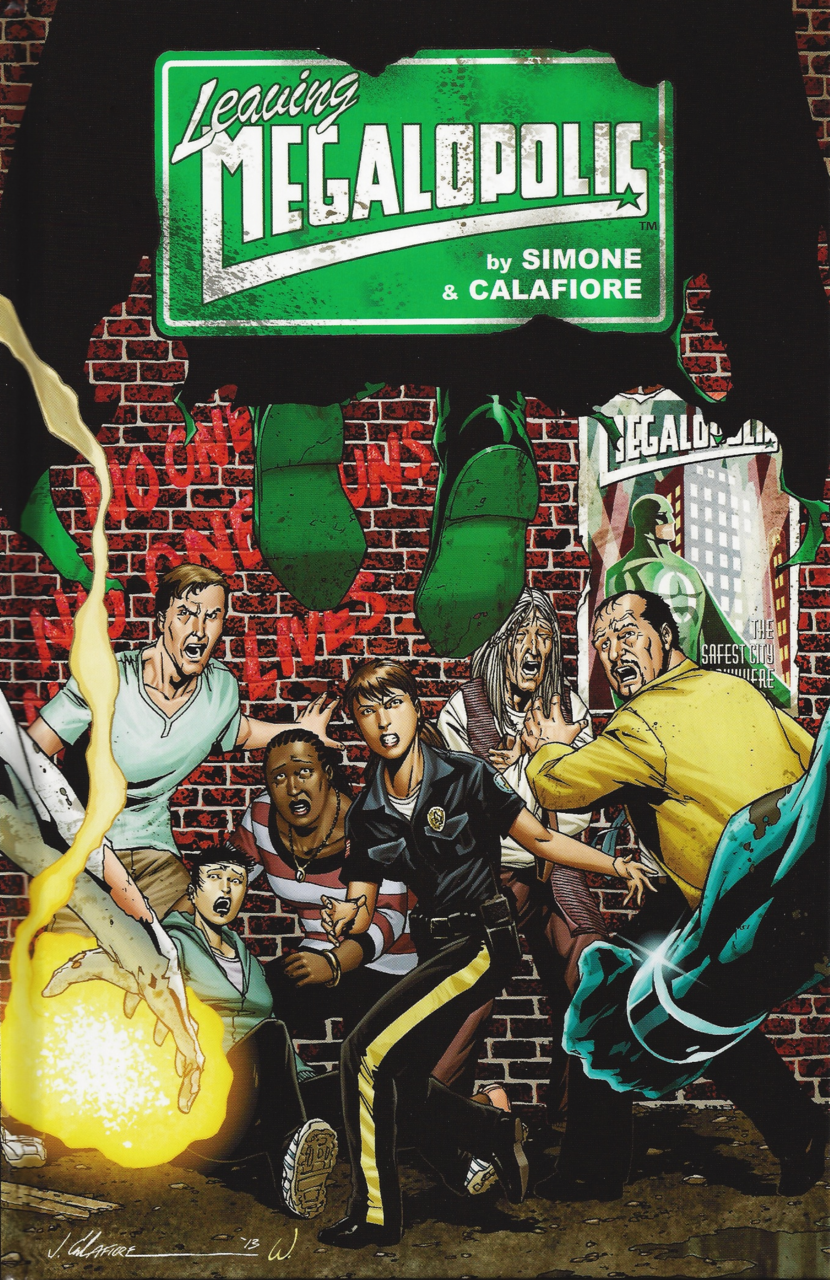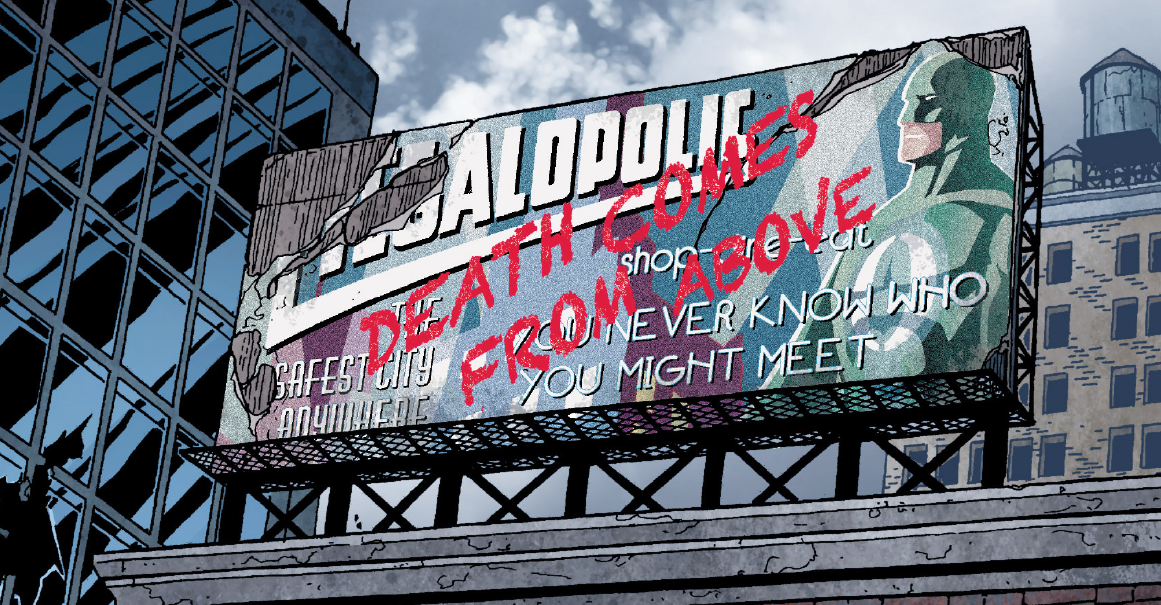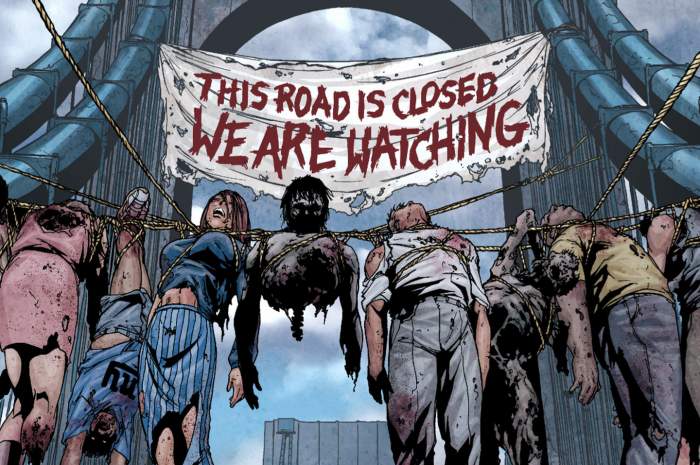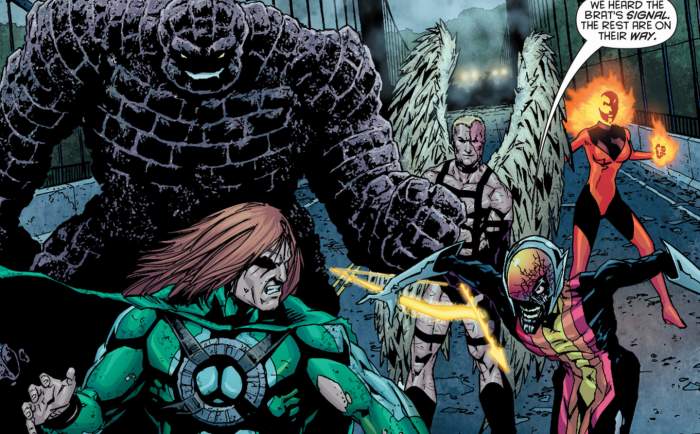ReRead: Leaving Megalopolis
Fangirl isn’t really a word that resonates with me. There’s nothing wrong with being a fangirl of course, I’ve just never felt that it fit me. So I rejected the word completely and went on with being aggressively interested instead (it’s different I swear). Then, a few months ago something happened. Something monumental. Gail Simone followed me on twitter and I FLIPPED OUT. I screamed a little, woke everyone in my house to tell them and haven’t been able to tweet since without thinking “but what will Gail think?”. It turns out I may be a fangirl after all.
I’m okay with this, if fangirl is to be added to my identity then heck yeah it should be because of Gail Simone. Just add it to the list.
Gail Simone is one of my favourite writers. Her work on Tomb Raider made me fall even deeper in love with Lara Croft and Jaffa Cakes, Batgirl changed me entirely and Red Sonja regularly makes me feel completely justified in skipping a shower or two. Even Gail’s twitter, which should count as a book it’s so brilliant, makes my day over and over. She created ‘Women in Refrigerators’, she can pick up any character, dust them off and make them wonderful and she tweets about how sneaky us Irish are quite a bit so clearly she’s on to us.
Gail Simone should be queen of the world.
When her Kickstarter phenomenon Leaving Megalopolis was released by Dark Horse last year I raced to get my grabby little hands on it and devoured it within the hour. But, and I hate to admit this, I didn’t love it. I liked it of course, but I didn’t love it. Just this week, Dark Horse announced a sequel mini-series called Surviving Megalopolis and I desperately wanted to be excited. So instead of admitting defeat in the face of my one and only chance at getting my fangirl badge I decided to give it another go and find out just how wrong 2014 me was.
Megalopolis, once the safest city on the planet, is now the playground of homicidal former super-heroes. Well, currently super and formerly heroic. When I say homicidal I mean full on, thirsty for blood, tummy-gurgling hungry for marrow murderous. The city is a wasteland. The first pages span over the ruins of Megalopolis. Blood, bodies, craters… death and destruction are everywhere. There’s no subtlety here, it’s disgusting, it’s gory. Honestly, it’s pretty gross and pretty great. It’s striking. Graffiti covers destroyed and abandoned homes and businesses:
“God helps those who God loves.”
“Death comes from above.”
“No one leaves, no one runs, no one lives.”
After a quick tour of the once great city we meet our main character, Mina as she apologises to a lifeless woman before her police uniform gets splattered with the blood of yet another victim of the ‘heroes’. A fellow survivor appears, begging for help and we’re off. We follow Mina as she collects a group of eclectic survivors desperate to escape the city. We flick back and see her childhood, every bit as tragic as her present. We pop in and out of court hearings that fill us in on how on earth this could happen. All the while we join this little group, this little make-shift family as they fight for their lives.
Mina is a classic Gail Simone character. Her past is etched all over her present, she’s fiercely protective of women, she’s strong, she’s tough, she’s lonely, she’s a fighter, she’s heavy with the things she’s witnessed yet full to the brim with hope and determination. Mina is a fully realised character and, though 2014 me (idiot) didn’t realise it, she might be the best character Gail Simone has written. Leaving Megalopolis could be cast aside as another superhero story, and it is. It is 100% a story about heroes but it takes the whole concept of heroes, smashes it up and pieces it back together again to make something new. What it makes is something weird, something not exactly enjoyable, it isn’t nice to look at but you can’t look away. It’s a study in heroism. Do the powers make the hero? Do the powers break the hero? Does responsibility negate heroism?
The first of the ‘heroes’ we meet is Fleet. He’s super fast, super strong and super scary. His design, his dialogue, that face? Horrifying! The panels directly following his introduction are near panic-inducing. But a few pages later we meet a group of people, survivors, who seem to have hacked this whole apocalypse deal. They’ve realised that the ‘heroes’ need to kill, once they do that need is sated for a while and off they go to terrorise someone else. So what do they do with this information? They come up with a plan to solve all of their problems. Every four hours they chain someone to a pole outside their fancy-schmancy building to be killed. Perfect! But how do they decide who to sacrifice? Well, that one guy doesn’t say hello in the elevator so he can go first. The dude down the hall plays music too loud so he’ll be next. And so on and so forth until they’ve purged their little utopia of every social faux pas.
Pages with these characters are every bit as disturbing as Fleet and his creepy, fiery face. People with too much power using it in the worst of ways, it’s a realistic problem with added super-speed. Leaving Megalopolis is about the very worst and the very best in people. It’s cruel and it sugar coats nothing. Actually, it adds just a little more blood instead. The characters are layered and genuinely interesting. You have no idea who you can trust you but you want to root for them. The whole story is so ruthless that there’s no room for complacency, anyone can die at any time. The stakes are high and the risk is palpable. The story flows and makes it an easy read despite all of the corpses.
The world building is quick and complete. The characters are diverse and fascinating. Jim Calafiore’s art is gorgeous, full of energy, movement and emotion. They embrace guts, gore and violence showing a variety of equally disgusting fates and yet scenes about domestic abuse hit the hardest. Violence is given weight and magnitude. It’s plenty but it isn’t gratuitous and it never veers off towards sexual violence (in Gail we trust).
Leaving Megalopolis is, despite everything I’ve ever said before, a great graphic novel. I don’t like it, I love it and now, sincerely, I can’t wait for Surviving Megalopolis.
Leaving Megalopolis is available now from Dark Horse Comics.

